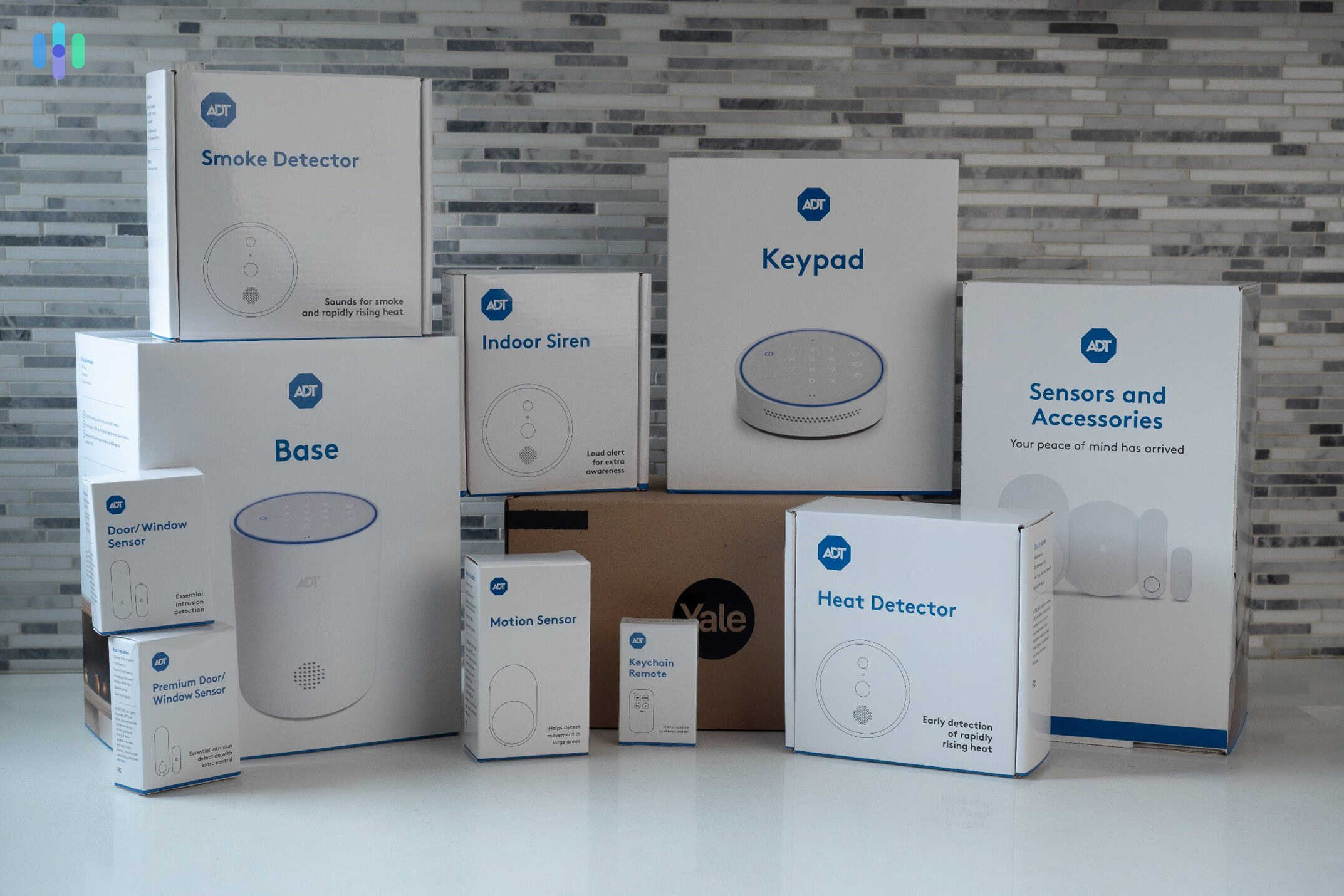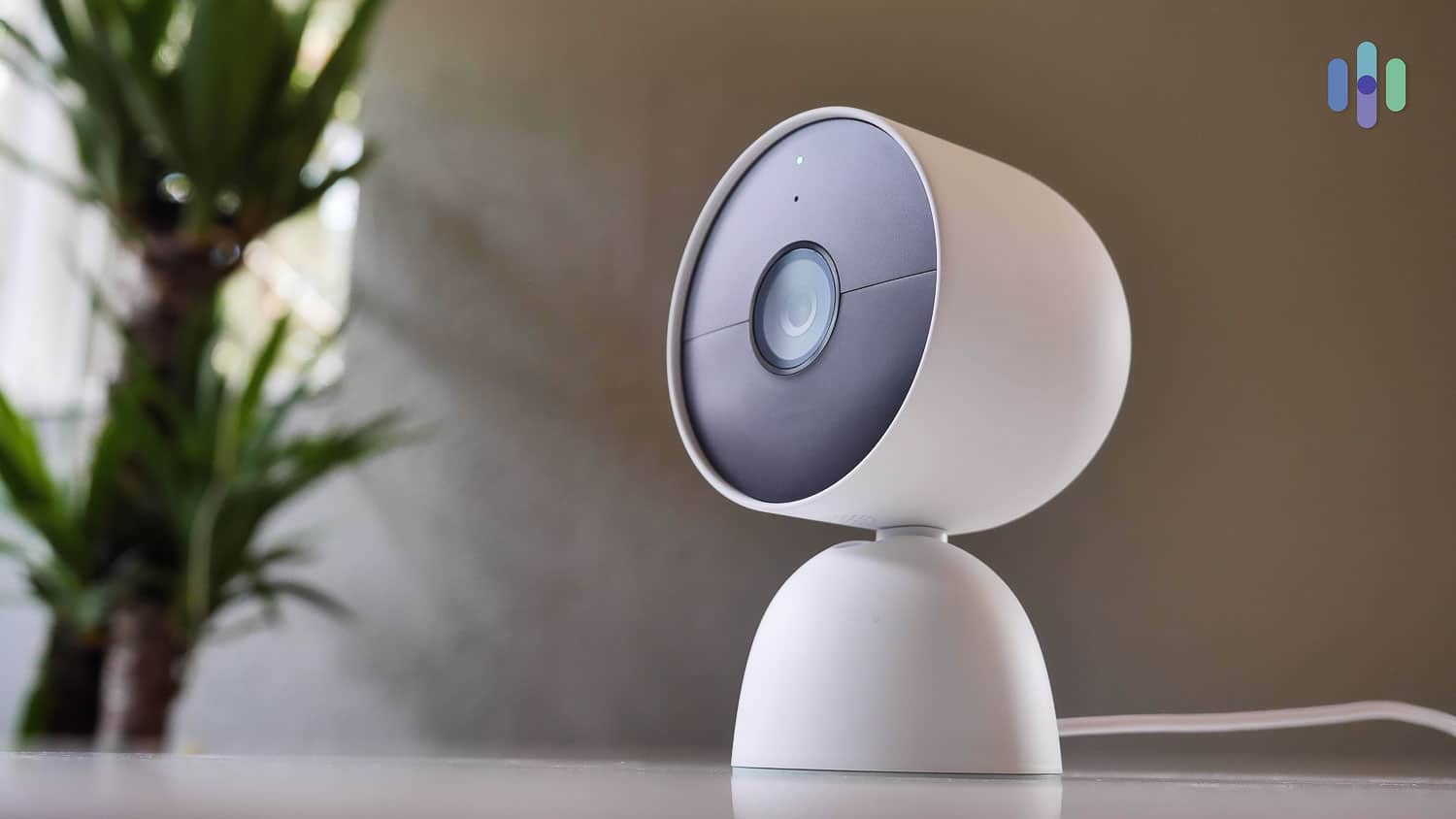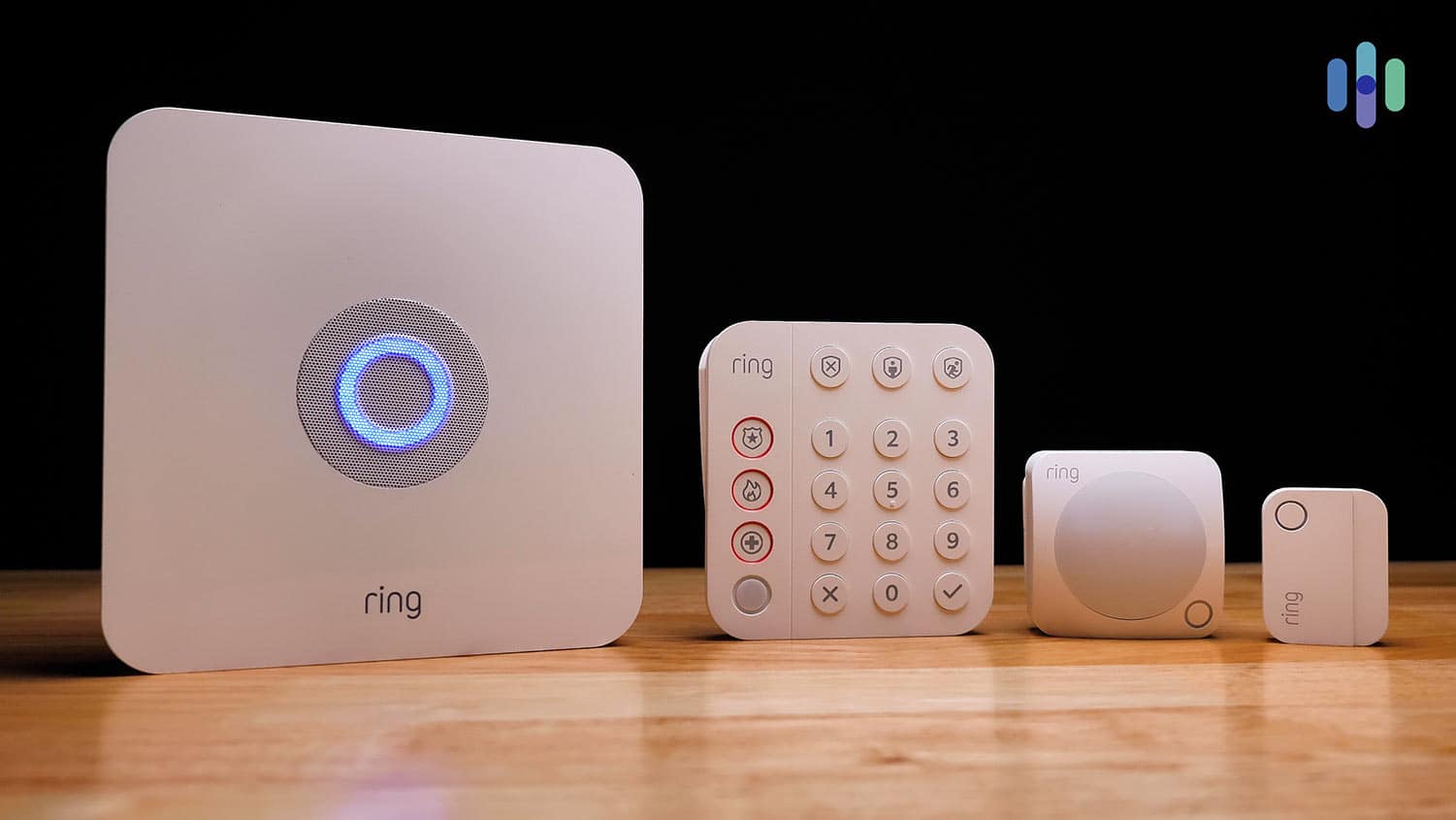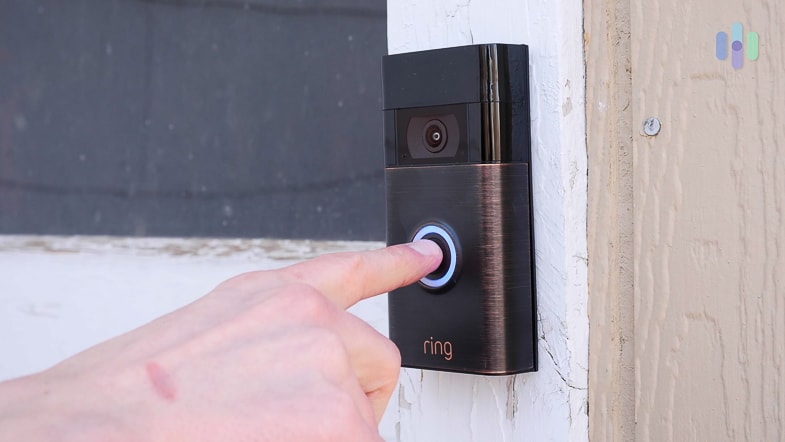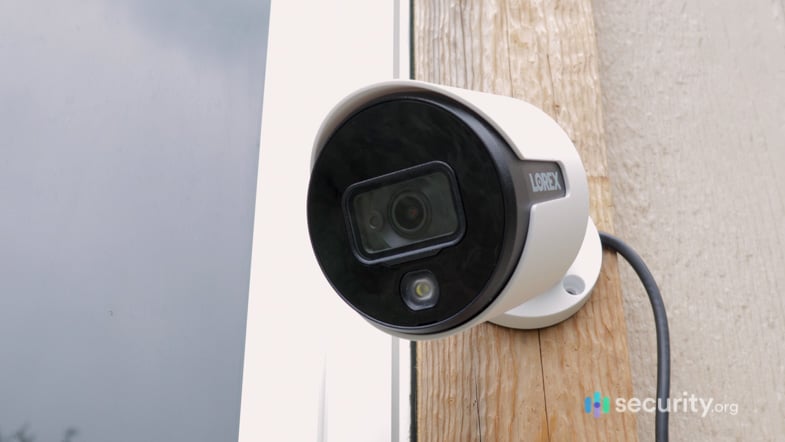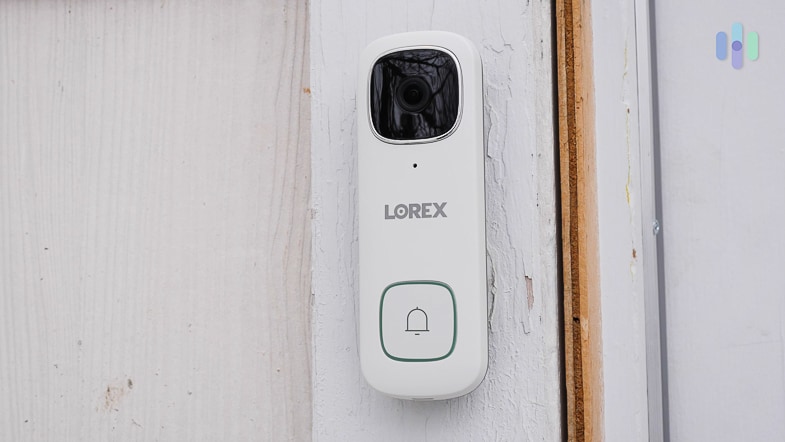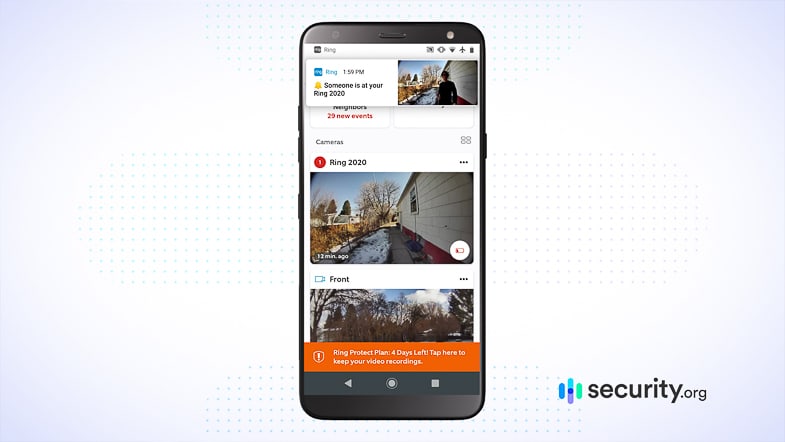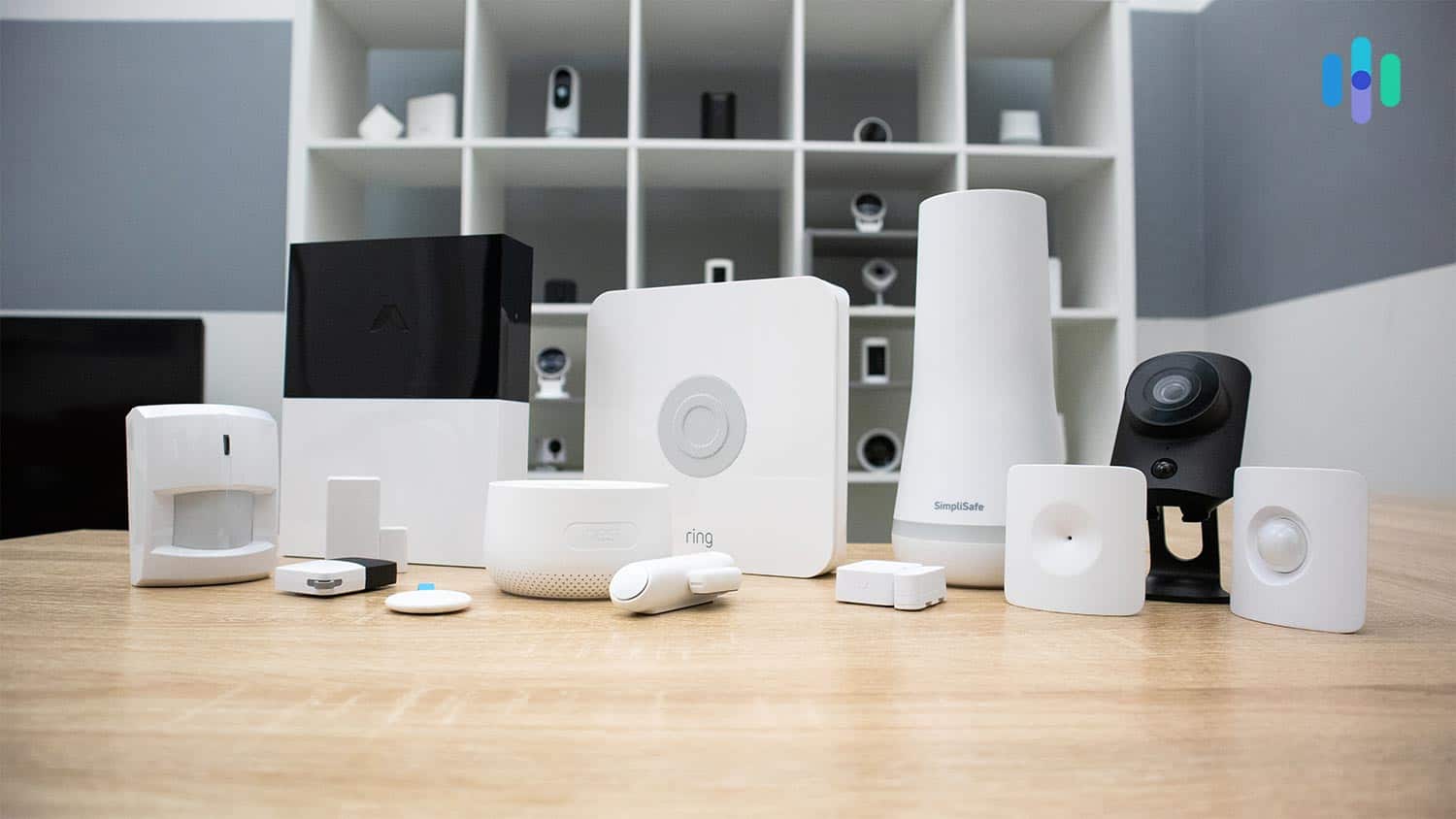Best Hardwired Security Systems
With a mix of wireless and wired equipment, as well as new features like Trusted Neighbor, ADT is our top-pick for folks looking for a wired home security system.


- 145 years in business, offers wired and wireless security systems
- State-of-the-art professional monitoring facilities
- Customizable security systems tailored to every home’s needs

- Affordable security systems starting at $199.99
- Ring Retrofit Kit makes use of old wired sensors in a modern setup
- Offers plenty of security cameras and doorbell cameras (wired and wireless)

- Sturdy and durable security cameras for indoor and outdoor use
- Advanced features and high-end video resolution (up to 4K)
- Free local video storage via an NVR or DVR
Wireless security systems are flexible and convenient. They also offer advanced features like smart home automation. But if you’re after reliability, you should consider getting wired home security equipment instead. The problem is that there aren’t as many wired security systems now as before, especially with the quick rise of wireless DIY options.
We offer a better solution instead – home security systems that include both wired and wireless equipment. That way, you can enjoy the best of both worlds. And since you’re looking for reliability, ADT is our top-pick. Not only is its equipment reliable, it also boasts a monitoring network bigger and with more redundancies than any alarm system around. Keep reading to learn more about ADT wired equipment and our two other picks, Ring and Lorex.
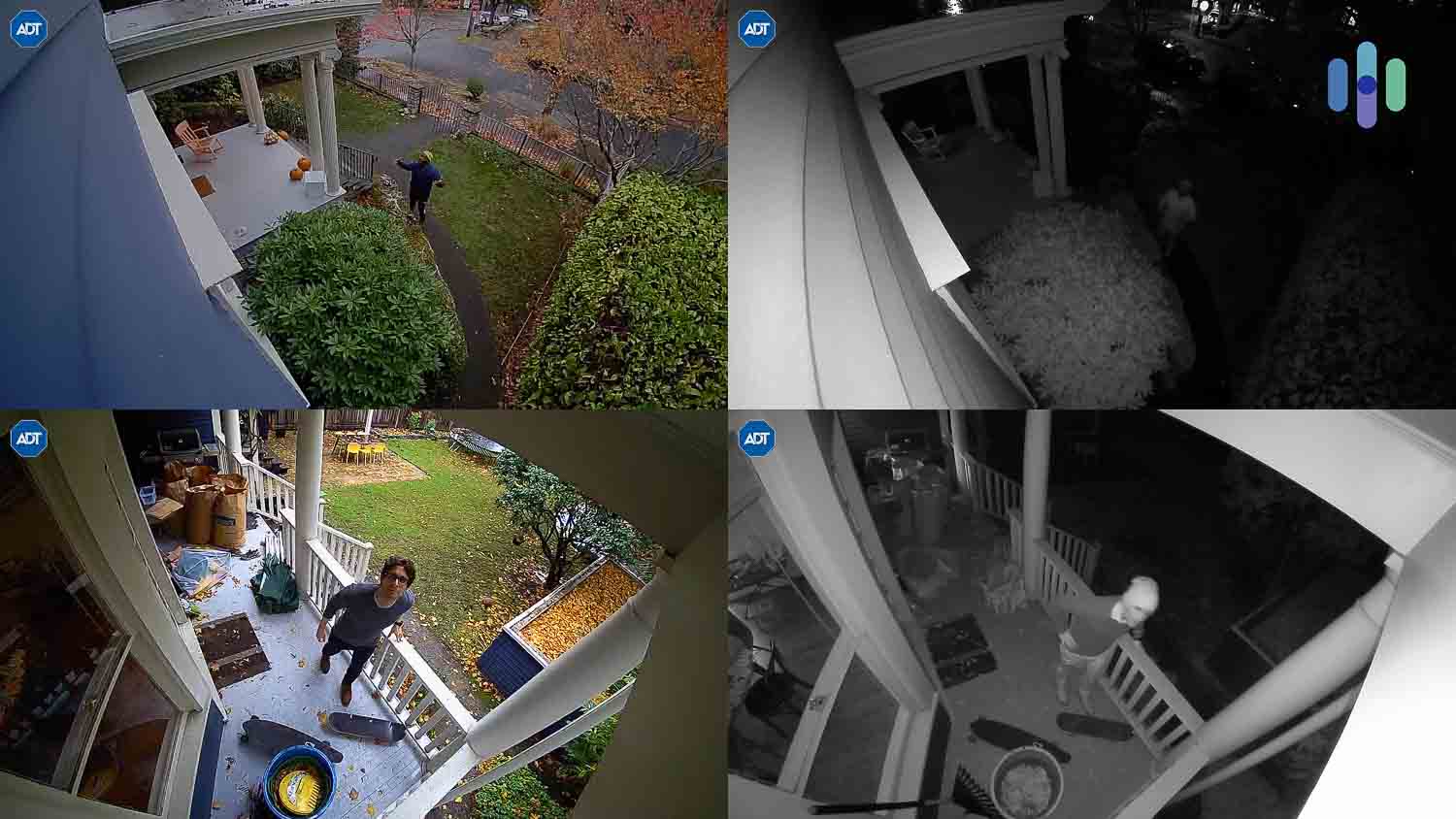
Summary of the Best Wired Security Systems
- ADT - Best for Professional Monitoring
- Ring Alarm - Best Wired Security and Doorbell Camera Options
- Lorex - Best for DIY Video Monitoring
What Makes a Good Wired Security System?
Generally, this is what you’ll want to look at and compare in security systems with wired and wireless equipment:
- Type of wired equipment: Security cameras are the best type of equipment to get in a wired configuration, as they require a reliable power source and means of data transmission for live monitoring.
- Installation: Since wired systems are harder to install than wireless ones, look for systems that offer professional installation rather than DIY.
- Monitoring: You’ll get the most bang for your buck if you choose professional monitoring. Your security system will be linked to a monitoring center. That way, you’ll get the most return on investment from choosing to go with a wired system.
Having looked at those three main factors and tested all the top security systems out there, we’re here to share the best home security systems that offer wired equipment.

Wired Security Systems Comparison
| System |
ADT

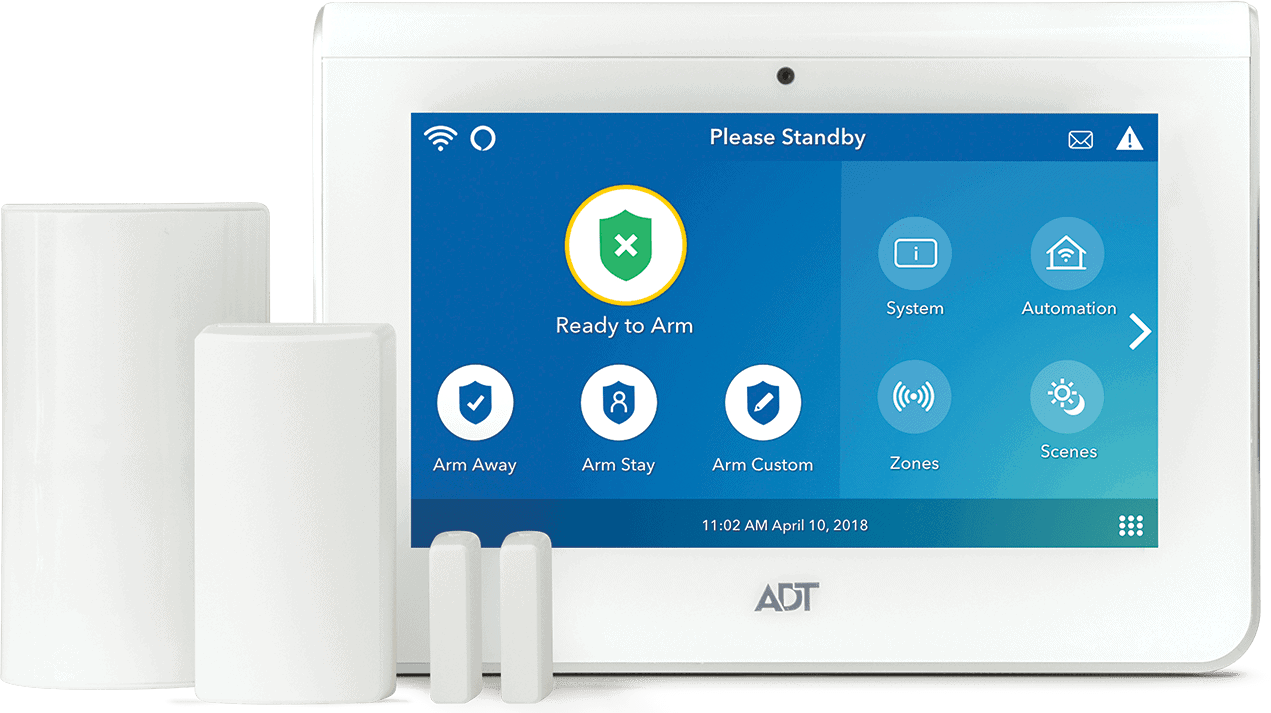
|
Ring Alarm

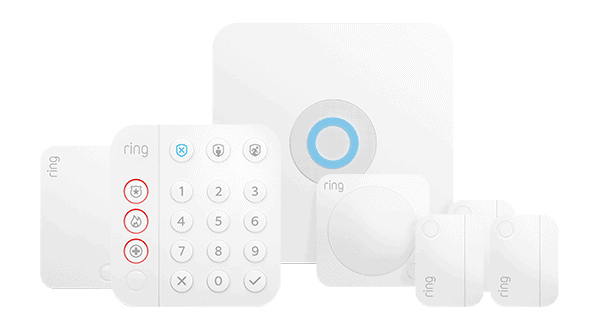
|
Lorex

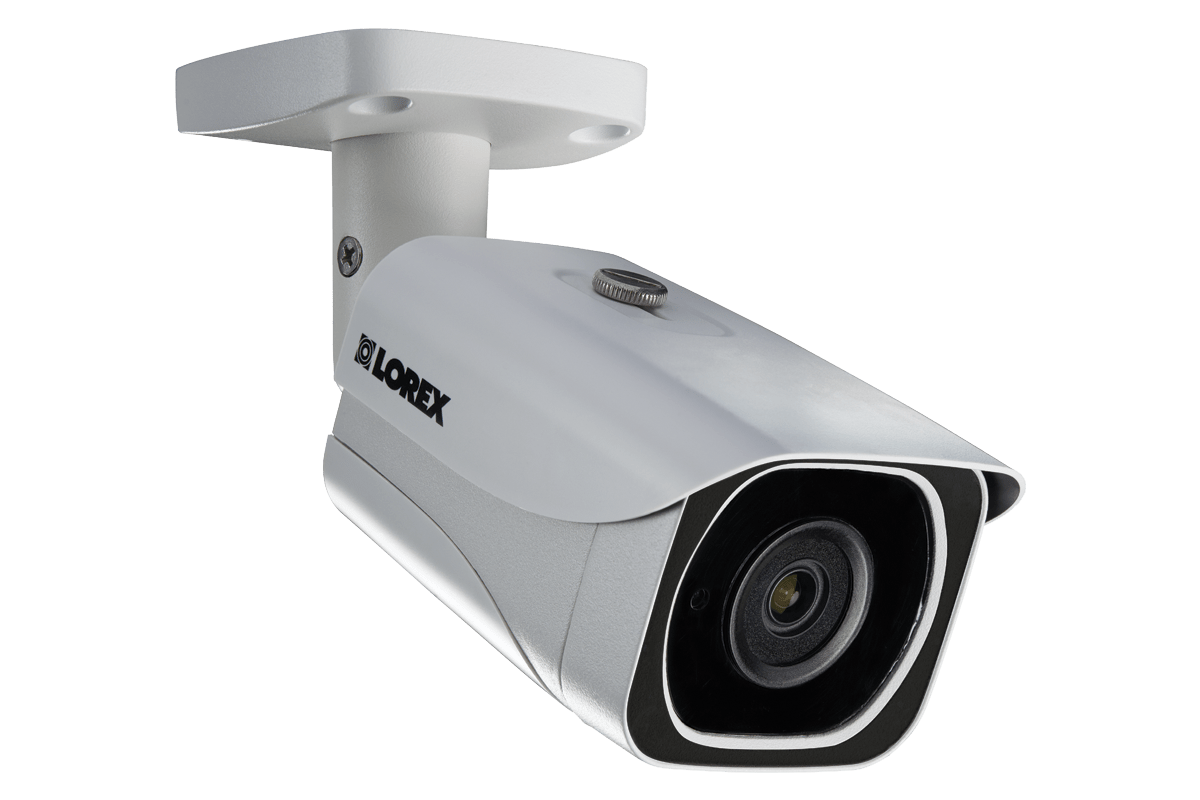
|
|---|---|---|---|
| Ranking | 1st | 2nd | 3rd |
| Ratings | 9.8/10 | 7.7/10 | 9.0/10 |
| Wired security cameras | Yes | Yes | Yes |
| Sensors (wired or wireless) | Wireless | Wireless | n/a |
| Communication technology | Internet, cellular | Internet and cellular | Internet |
| Equipment price | Starts at $269 | Starts at $200 | Starts at $280 |
| Monitoring price range (per month) | $29.99 to $44.99 | $3.99 to $20 | n/a |
| Installation | DIY or Professional | DIY or professional | DIY only |
| Money-back guarantee | 6 months | 30 days | 30 days |
| Contract length | Up to 3 years | Month-to-month | No contract |
| Read Review | ADT Review | Ring Alarm Review | Lorex Review |
-
1. ADT - Best for Professional Monitoring
View Packages Links to ADTProduct Specs
Equipment Costs Packages starting at $349 Monitoring Options Professional and DIY Monthly Monitoring Costs Starting at $24.99 per month Contract Lengths Month-to-month or 36 months and up Installation Options Professional and DIY Smart Platform Integration Alexa and Google Home Type of Wired Equipment
ADT offers a wide range of home security and safety equipment, but the bundles available online include mostly wireless components. The only wired devices you can buy online are the Google Nest Cam (wired, indoor), the Google Nest Cam with Floodlight, and the Google Nest Thermostat for temperature automation.1 You might notice that those are all Google products. As of 2021, ADT has entered a partnership with Google.2
While the main hub of the ADT system isn’t hardwired, it plugs into the wall for power. Plus it has a 24-hour battery backup and cellular chip – both will aid to provide power and communication during outages. That’s what we meant when we said you’d get the best of both worlds – convenience of a wireless device and reliability of a wired one.
Pro Tip: If by any chance you’re looking for a wired security system for your business, you may be able to get more equipment options from ADT. It has one of the best business security systems that offers a wider variety of features from access control to wired security cameras with DVRs.
Our ADT security system was mostly wireless, but key components such as the hub and a couple of cameras were wired. Installation
Even though most of ADT’s equipment is wireless, it still requires professional installation. The downside is that the service isn’t free. ADT’s pricing for installation starts at about $100 but can scale up depending on the size of the system. The last time we had an ADT system installed, it cost us a little over $150 for a comprehensive security system.
On the bright side, though, it’s because of that professional installation that ADT can offer a six-month money-back guarantee on equipment. For example, when a component they installed malfunctioned a week after we got them installed, ADT’s technician came back and repaired it for free, but we were told we’d be able to get our money back if they couldn’t fix it. They have the longest money-back guarantee in the market; others like SimpliSafe offer a 60-day guarantee, but the industry norm is 30 days.
>> Compare: SimpliSafe vs. ADT
Monitoring
ADT’s biggest selling point is monitoring, which is why it’s our best recommendation for those who are looking for a monitored security system with wired equipment. ADT boasts 12 monitoring centers, each equipped with backup generators, servers, and communication lines. That lines up well with ADT’s equipment, which also comes with backup power (24-hour battery) and communication (cellular).
Another thing about ADT’s monitoring to note: if your home comes with existing wired security sensors, you might be able to hook them up with a new ADT system. You’ll have to give ADT a call to find out if that’s possible, but it’s one of the few remaining companies with the technology to bridge the gap between old and new systems. Most ADT alternatives, like Vivint and SimpliSafe, only work with self-branded sensors — which are almost always wireless.
>> Further Reading: Vivint vs. ADT
What We Like
- Gold-standard professional monitoring service
- Mix of wired and wireless equipment from Google and ADT
- Six-month money-back guarantee
- Frequent deals
What We Don’t Like
- Requires a monitoring contract
- Monitoring fee can cost up to $60
- Customer support can be a mixed bag
- Professional installation service isn’t free
A closeup of the Nest Cam (indoor, wired) that we tested as a part of our ADT security system. Why We Picked ADT
The latest ADT security system we tested comes with modern equipment but has some wired devices. For example, the indoor-only Nest Cam and the Nest Cam with floodlight we tested as ADT cameras. Both provided reliable video security and remote livestreaming that helped us check on things whenever we’d receive alerts from ADT.
ADT’s sensors, however, were all wireless. But we liked them that way. They didn’t need to be wired as long as the hub they’re connected to has constant power and communication, which the ADT Base had.
Moreover, we know we could rely on ADT’s monitoring center to stay online no matter what. That, really, is ADT’s best feature. Its 12 monitoring centers with backup power, servers, and communication make ADT our top pick for reliability.
>> Related: The Best Security Systems for Large Homes
A complete ADT security system review by Security.org’s Gabe turner -
2. Ring Alarm - Best Wired Security and Doorbell Camera Options
View on Amazon Links to Amazon.comProduct Specs
Equipment Costs Packages starting at $199.98 Monitoring Options Professional and DIY Monthly Monitoring Costs $10 with the purchase of a Ring Home plan Contract Lengths 1-12 months Installation Options DIY or professional Smart Platform Integration Alexa and Google Home 
Type of Wired Equipment
Much like ADT, our Ring Alarm security system worked with a number of wired security cameras, as well as video doorbells. Unlike ADT, though, Ring security cameras and doorbells offered much more advanced features. For example, some of the security and doorbell cameras use advanced motion detection powered by radar, which makes tracking a guest’s movement from a bird’s-eye view possible. Some versions of the Ring Video Doorbell Pro and the Ring Spotlight Cam we tested offer that feature.
From the sheer number of available options alone, it’s clear that Ring has a leg up on ADT from an equipment standpoint. Ring offers three variants of wired outdoor cameras, two variants of wired indoor cameras, and four variants of wired doorbell cameras. You can integrate any of those options into a Ring Alarm security system.
While the Ring Alarm security system itself is mostly wireless, it works with a wide variety of wired security and doorbell cameras. Installation
Another difference between Ring Alarm and ADT is that Ring doesn’t require professional installation. It’s a DIY system. That said, if you’re having wired cameras installed, you can enlist the help of OnTech, a third-party home service provider that specializes in Ring installation.3 They can set up any Ring product, but we recommend hiring them if you’re having a Ring Floodlight Cam Wired Plus or Pro installed, as those require hardwiring the unit to a junction box.
As for the other Ring products, we were able to set them up ourselves without a hitch. The Ring Alarm sensors were pretty much plug-and-play, and while the Ring Video Doorbell Pro needed hardwiring to our existing doorbell setup, the installation was cut-and-dry. We followed the instruction manual to the dot and set it up in under 15 minutes.
>> More Information: How to Install Home Security Cameras
Monitoring
Ring also goes a different route than most other security companies in terms of monitoring. Professional monitoring is highly recommended, but not required. That means you could have a Ring security setup without paying monthly fees. It’s one of the best no-monthly-fee security systems right now, next only to SimpliSafe and abode, both of which offer completely wireless equipment.
On top of the professional monitoring service being optional, it’s also affordable. It’s more affordable than even SimpliSafe, our top low-cost security option. Ring will monitor your security system for $20 per month, and that includes unlimited cloud storage for as many Ring cameras and doorbells as you have in your home. ADT charges $44.99 for similar features, while SimpliSafe charges $31.99 for the same (but cloud storage is for 10 cameras only).
What We Like
- Wide selection of wired security and doorbell cameras
- Advanced features including built-in security lights and smart detection
- Professional monitoring is optional
- Retrofit kits for existing wired equipment
What We Don’t Like
- Security and doorbell cameras require an internet connection
- No free or local video storage options
- History of security breaches
- Limited wireless range for wireless sensors
The Ring Video Doorbell, one of the wired doorbell cameras from Ring. Why We Picked Ring Alarm
We picked Ring because of its wide selection of wired and wireless security cameras and doorbell cameras. And while some of its wired cameras are a little too difficult for us to install by ourselves, we liked that there was an option for professional installation.
There is another thing about Ring we haven’t mentioned yet – the Ring Retrofit Kit. It’s a conversion system that allows existing wired security systems such as those that come with older homes to work with the mostly wireless Ring Alarm. We’re not so thrilled about it because it can only connect wired door and window sensors4, and it still requires at least a basic Ring Alarm setup. But it’s worth a mention nonetheless.
Pro Tip: We tried the Ring Retrofit Kit in a friend’s apartment with five wired door/window sensors and didn’t think it was worth it. We paid $79.99 for the device and another $199 for the basic Ring Alarm setup only to get five old sensors to work. We believe it’s only worth it if your house has lots of existing door and window sensors.
>> Learn More: The Best Security Systems for New Construction Homes
-
3. Lorex - Best for DIY Video Monitoring
View Packages Links to LorexProduct Specs
Resolution Up to 4K HD Field of View Up to 180° Power Wired, battery, PoE Connectivity Wi-Fi, ethernet Video Storage Cloud, Local Smart Platform Compatibility Alexa and Google Home 
Types of Wired Equipment
Lorex isn’t a security system in the traditional sense, but rather a security camera brand. It offers the widest selection of wired security cameras we’ve ever seen. There are 51 different options, each available in two to five configurations sorted by the number of cameras included. The largest systems, which cost over $5,000, include 32 cameras, but that’s usually for large establishments and businesses. For homes, Lorex offers solid four-camera systems for as low as $279.
We haven’t tested all of them, but we did test a Lorex 4K camera system with four cameras and a 1 TB local recording box (aka NVR). It was wired both for power and internet connectivity, making it one of the most reliable wired security cameras in the market today.
The Lorex 4K outdoor camera we tested was wired for both power and internet connectivity. Installation
Unfortunately, Lorex is a DIY brand. It doesn’t offer professional installation, but much like Ring, it has a preferred installation partner. InstallerNet handles Lorex installation for the entirety of the United States.
In our experience, though, even wired Lorex cameras aren’t too much to handle DIY style. Sure, running a wire from the camera to the NVR necessitated us crawling up into the attic and drilling some holes into our ceiling, but there’s nothing too technical to set up, even for an average Joe or Jane. All it took was some creativity and duct tape to make the wiring work in less than half a day. Not bad.
Monitoring
This is completely nonexistent with Lorex. That’s one of its downsides compared to ADT and Ring Alarm. Lorex sells hardware and offers apps you can use to assist in DIY monitoring, but it doesn’t offer monitoring services at all — not that that’s something you should expect from a security camera brand. Most security cameras are self-monitored. Only a handful of them offer professional monitoring, like Deep Sentinel, for example.
That said, Lorex makes DIY monitoring a breeze. Its NVRs and DVRs record continuous video so they don’t miss a thing. Some models, like the 4K system we tested, can even highlight motion events in the timeline for easier playback. Just set aside some time every few days to review moments you might have missed. That’s not a substitute for real-time professional monitoring, of course, but that’s usually as good as it gets with security cameras. Additionally, Lorex can send real-time motion and event alerts.
Expert TakeFrom Gene Petrino, Retired SWAT Commander and Law Enforcement“Call centers usually do not contact the police for at least 5 minutes, and by then, the suspect has already fled the scene. I have personally apprehended burglars as the homeowner provided detailed information on the suspect’s appearance and location after they were alerted to the intrusion on their smartphone. This is the advantage of having a system provide direct notification to the homeowner.”What We Like
- Can work without Wi-Fi
- Rugged and versatile security cameras
- Continuous video recording without monthly fees
- Expandable local storage
What We Don’t Like
- Installing wired cameras can be a hassle
- No professional monitoring
- Bulky equipment
- Limited customer service
A look at the wired Lorex 2K doorbell camera we tested in our home. Why We Picked Lorex
One of Lorex’s greatest attributes is its ability to work without Wi-Fi. As we mentioned earlier, that’s a particular problem some homeowners looking to install a wired security system face. Most security cameras don’t work without Wi-Fi because they need to be able to connect to the internet to generate alerts and send recordings to the cloud. When we tried using Lorex without Wi-Fi, it stopped generating alerts but still recorded continuously. That’s a valuable feature if your home doesn’t have Wi-Fi or an internet connection.
Of course, we recommend connecting Lorex to Wi-Fi to enjoy the extent of its features. And don’t think of Lorex as just a plain old CCTV system. Its equipment may look bulky, but Lorex offers advanced features like smart home integrations. We were able to pair our Lorex system with the Amazon Echo Show 8 we reviewed for voice controlled livestreaming. Our NVR also supported facial recognition and person-detection features, much like Arlo’s high-tech security cameras.
>> Learn More: Arlo Ultra Review
Are Wired Systems Better Than Wireless?
Those are our three top contenders for wired home security, but before you take your pick, let’s first discuss a few important talking points. For starters, are wired systems better than wireless ones?
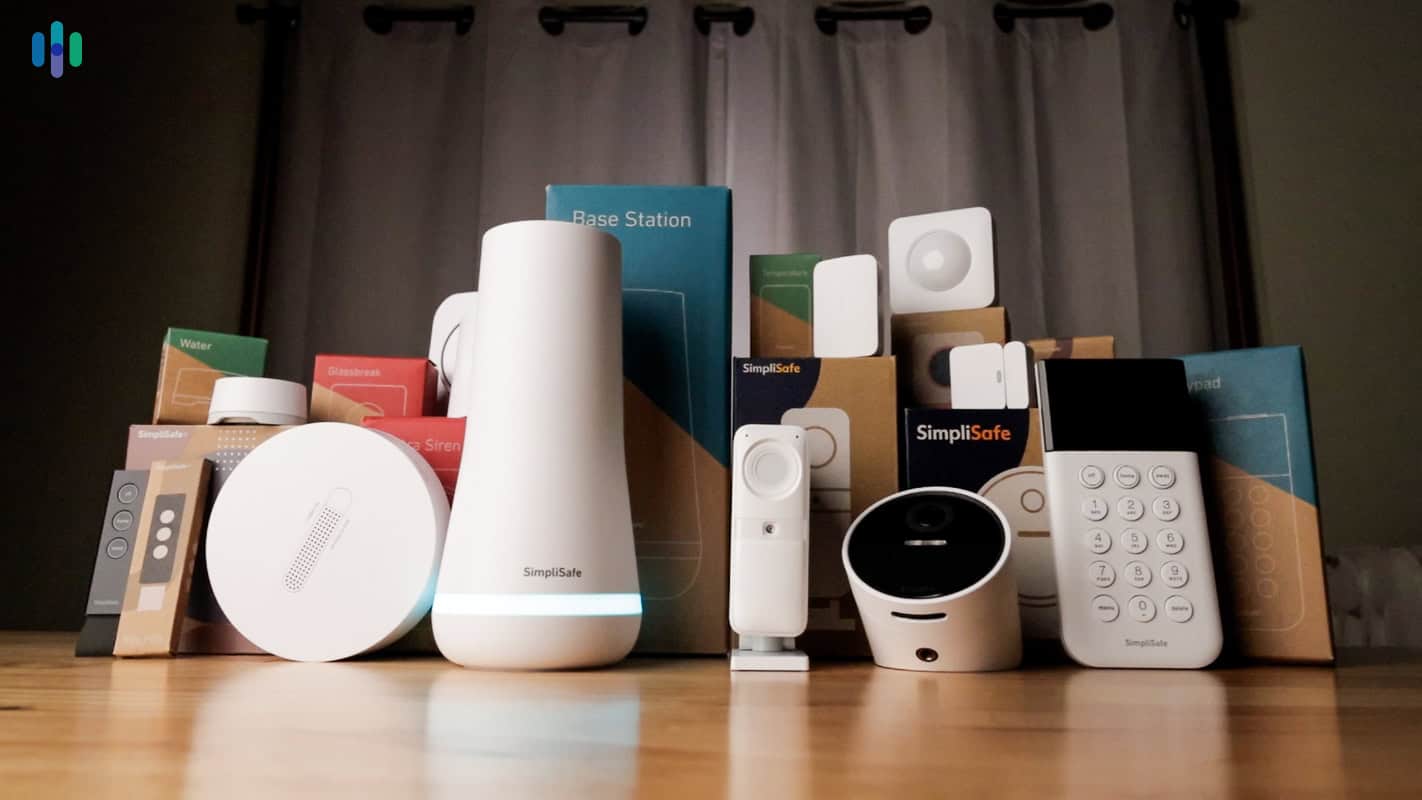
As we stated earlier, it’s a matter of personal choice. You know your home better than anybody and only you can tell which system is best for it. That being said, if we look at things objectively, it’s clear that a wireless system is better. Here’s why:
- Advancements in technology have erased the advantage of wired systems. Previously, wired security equipment was considered far more reliable than wireless equipment, but modern wireless sensors are now virtually as reliable as wired sensors.
- Wired systems are easier to deactivate. While it’s true that wireless equipment can be prone to signal inference, it’s easier to purposely deactivate a wired system. Landline and power lines can be cut from outside your house, whereas deactivating a wireless system with cellular and battery backup requires technical know-how. The key is to choose a good cellular security system.
- Wired systems aren’t really cheaper to monitor. This doesn’t apply to the hybrid systems with wired equipment we recommended above, but it does apply to traditional wired security systems that use landlines. Professional monitoring can actually be more expensive with these systems. That’s because you have to maintain a landline connection, something you probably don’t even need nowadays.
- Wireless systems are future-proof. It’s their greatest advantage. Wireless systems can adopt new technology through a simple firmware upgrade, whereas a wired system will likely require upgrading equipment to enjoy newer features.
Of course, there are exceptions to those. For example, if you have a large concrete home, it might still make sense to go with wired sensors because wireless signals can’t penetrate concrete well.5 Or if a reliable internet connection isn’t available to you, a landline-connected system is better than nothing. Our point, though, is if you have a shot to upgrade to a wireless security system and make it work, consider taking it rather than settling for a wired security system.
Must-Have Features For Wired Security Systems
Now, if a wireless system is totally out of reach right now, there are ways you can improve your wired system. These options are available from our top-picks above, so consider making these upgrades if they’re not already included in your package.
Cellular Backup
All the options above require an internet connection, which can be unreliable at times, as it’s prone to downtime. The solution is to add on cellular backup.
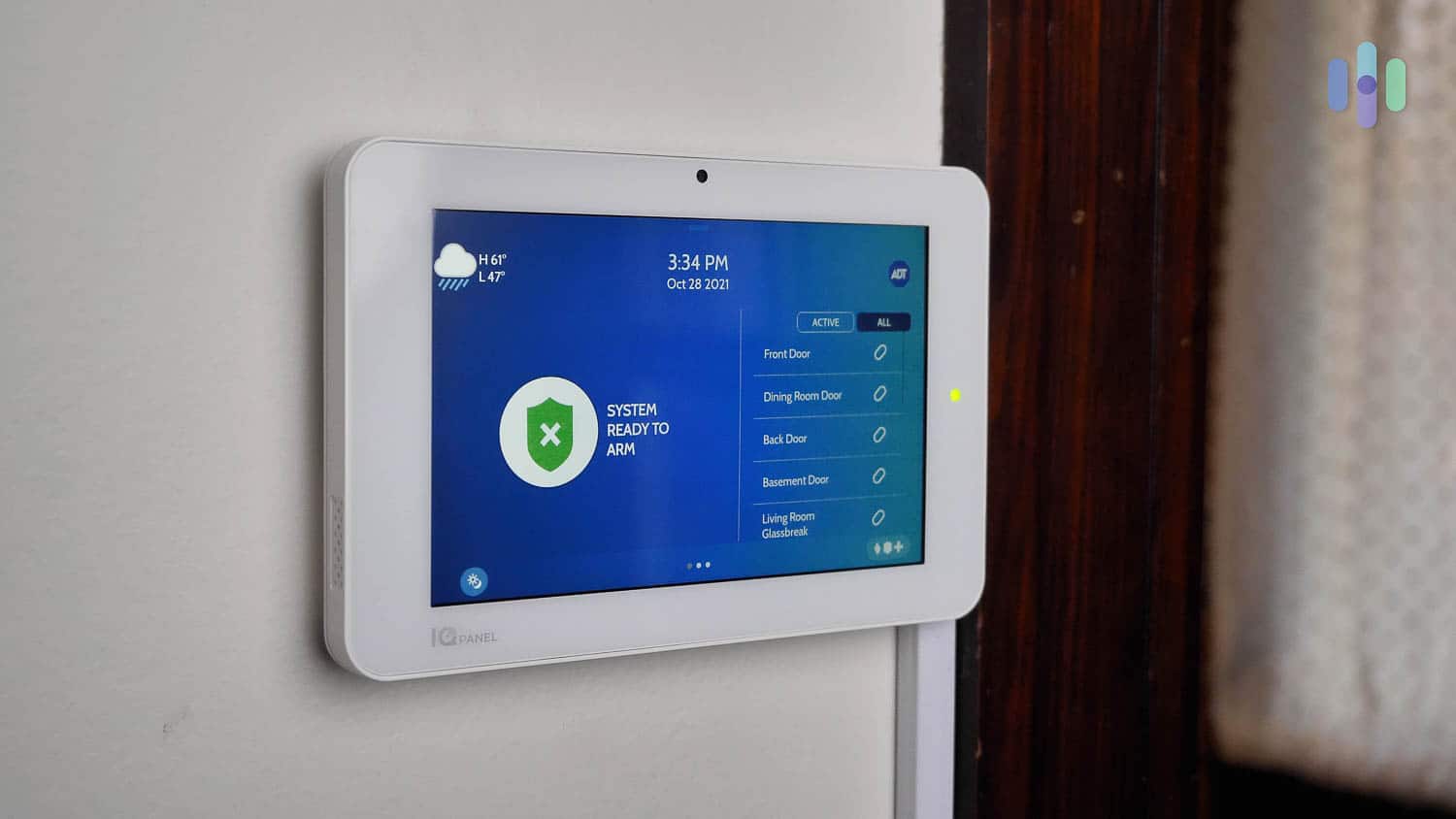
Cellular backup uses cellular signals to send alerts either to you or the monitoring center. It’s a built-in option from ADT, but Ring Alarm requires a professional monitoring plan to activate it. For Lorex, though, cellular signals aren’t enough to handle the data transfer required for security cameras.
Pro Tip: That doesn’t mean there aren’t any security cameras that use cellular signals; there are, such as the Arlo Go. We considered the Arlo Go when we tested Arlo security cameras, but didn’t go with it because of the cost. It needs a data plan on top of the cloud storage plan and the hardware cost. Still, it’s a great option if you need security cameras that don’t require Wi-Fi.
Battery Backup
This is also important. A wired system likely requires power from your home’s electrical system, so when the power goes out, so does your security system. If possible, choose a system with battery backup in the hub. ADT and Ring Alarm both offer this. As for Lorex, you can find security cameras that run on battery, but they’re not wired.
>> Related: The Best Battery-Powered Security Cameras
Local Video Storage
Cloud recording, which is when your camera sends recordings to a remote server via the internet, gives you peace of mind that whatever happens, your videos are safely stored. Even if the recorder or cameras are damaged, you can recover videos from the cloud. However, since it’s heavily reliant on the internet, cloud recording alone doesn’t cut it. We recommend having some sorts of local storage where you can store videos on-site.
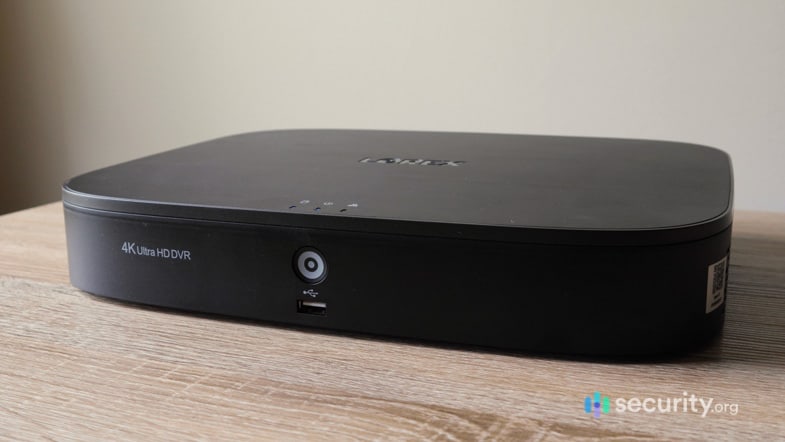
Lorex’s NVRs are a good example of that. As for ADT and Ring, you may be able to get local recording, but there are some hoops to go through. Ring requires the Ring Alarm Pro system to activate limited local video storage, while with ADT, only some Nest Cams have backup storage that can store only a few hours of videos. They’re not designed to work completely off the grid.
Are Smart Home Integrations Possible With Wired Systems?
Another possible upgrade for a wired system is smart home connectivity, but this deserves a section of its own because not all wired security systems support home automation. Traditional wired security systems — those that connect via a landline — don’t work with home automation. The Internet of Things (IoT) is the backbone of smart home automation, so without an internet connection, they’re simply not compatible.
That’s another reason why we recommend going with a hybrid system that offers wired equipment (like our top picks). They use wireless hubs and control panels that connect to the internet, making home automation possible. Here are some examples of smart home integrations you could implement:
- Security cameras connected to smart displays: This type of integration will let you view live camera footage on smart displays like the Google Nest Hub we reviewed.
- Sensors that can trigger smart devices: If you have smart appliances, smart lights, smart locks, or smart thermostats, you can trigger them using actions from wired and wireless sensors. For example, you can set your smart lights to turn on when a door is opened. (Note: Not all hybrid systems offer this level of automation. Check with the provider first.)
- Scheduled arming and disarming: You can also automate the security system itself. For example, you can set your hub to arm your wired and wireless sensors at 9 o’clock in the morning. It’ll follow the schedule like clockwork, ensuring you never leave your home unprotected.
Pro Tip: Check our list of the best smart home security systems, because some of them offer a few wired components as well. Vivint, for example, offers wired smart thermostats, and wired garage door controllers. Its cameras, however, are mostly wireless.
Recap
Wired security systems may have already become a rarity in today’s home security market, but they’re not completely phased out. Especially with our top-pick wired security systems that offer a mix of wireless and wired equipment, you can still get your money’s worth. As always, though, it all comes down to how well you tailor your security system to your specific security concerns and home layout. If you need help doing that, you can always check out our home security system guide.
FAQs
-
What’s the best hardwired system in the market?
ADT is the best hardwired system in the market. It offers a mix of wired and wireless equipment, giving you the best of both worlds. The security cameras from ADT are particularly great because they’re reliable and offer advanced features courtesy of Google Nest. We also appreciate ADT’s top-notch monitoring service and their industry-best six-month money-back guarantee.
-
Is a wired or wireless system better?
Objectively speaking, a wireless security system is better. It offers more advanced features, it’s more flexible and convenient to install, and you don’t have to worry about cut wires or landline outages. However, wired systems still have lots of upsides. They’re better for some large homes, for example, because you’re not limited by the sensor’s wireless range.
-
What are the top 5 security systems?
Right now, ADT, SimpliSafe, Vivint, Alder, and Cove offer the best security systems. Most of them provide wireless equipment, though, but they’re top-notch in terms of reliability.
-
Are wired systems hard to install?
There are different types of wired systems, and the difficulty of setup depends on which type of system you have. Landline systems with wireless equipment are easy to install as long as your landline is active. Security systems that need electrical work, on the other hand, might require the help of a licensed technician.
-
Why are wired security cameras better?
It all boils down to reliability. As opposed to Wi-Fi cameras, wired cameras can transmit videos more steadily than wireless cameras, because wired connections are more stable. Compared to battery-powered cameras, on the other hand, wired cameras don’t require charging or battery replacements. They’re plug-and-play and once they’re set up, they need minimal upkeep.
Google. (2024). Nest Thermostat.
store.google.com/us/product/nest_thermostat?hl=en-US&pli=1ADT. (2024). ADT GOOGLE PARTNERSHIP.
adt.com/googleOnTech. (2024). Ring Smart Home Security.
ontechsmartservices.com/collections/ringRing. (2024). Ring Retrofit Alarm Kit – Quick Start Guides.
https://ring.com/support/articles/9p4y8/Installing-the-Ring-Retrofit-Alarm-KitSignal Boosters. (2024). What Materials Block WiFi Signal?
signalboosters.com/blog/materials-that-block-wifi-signals/


